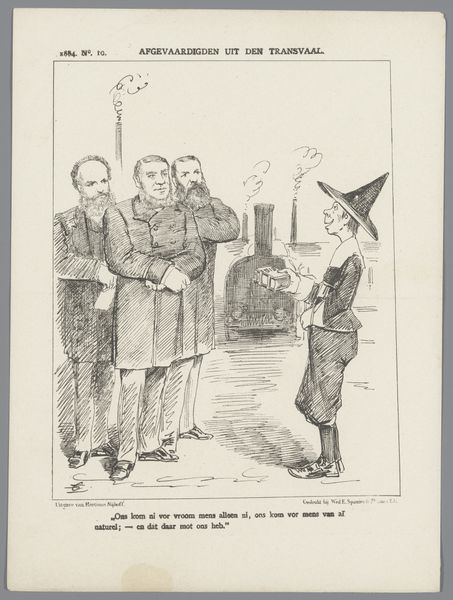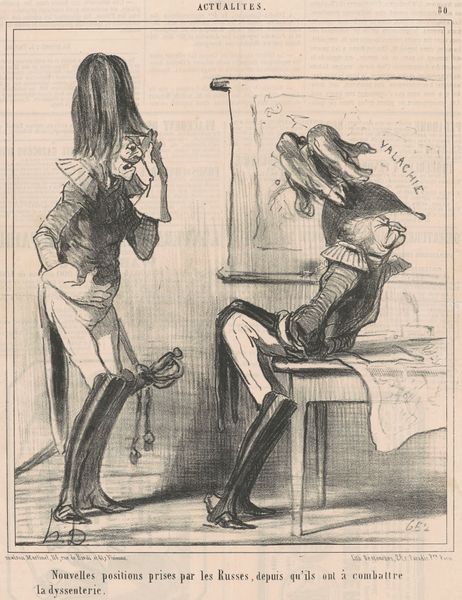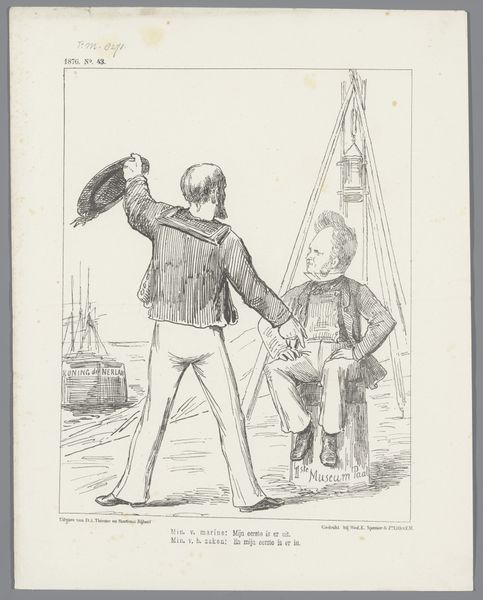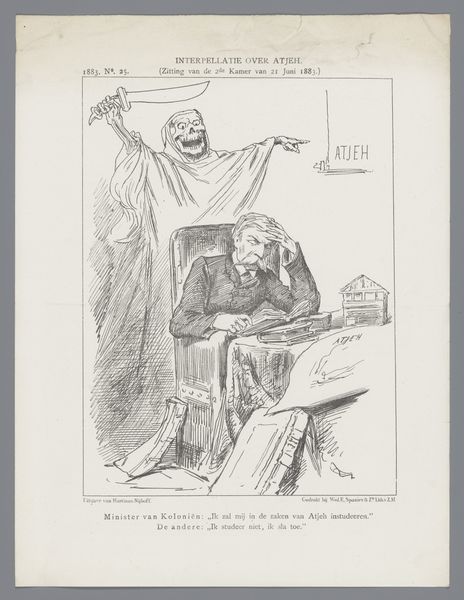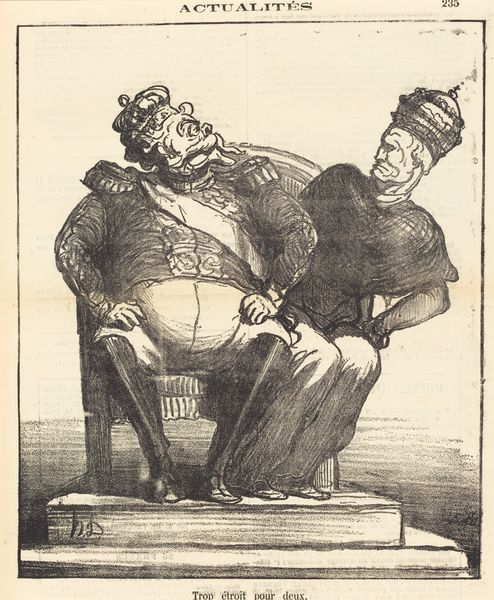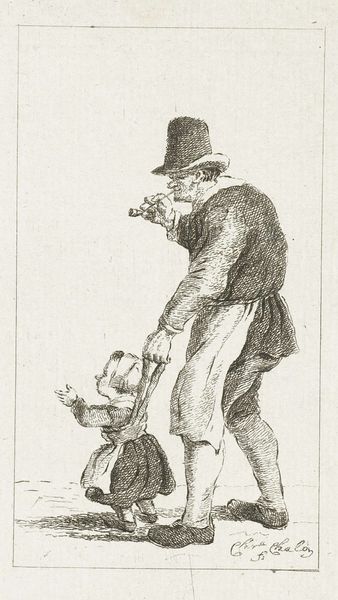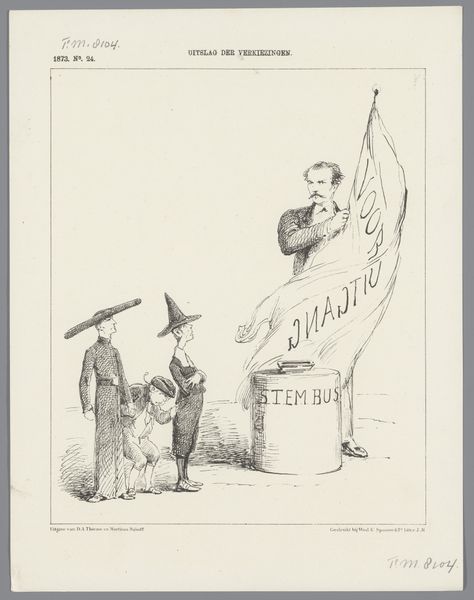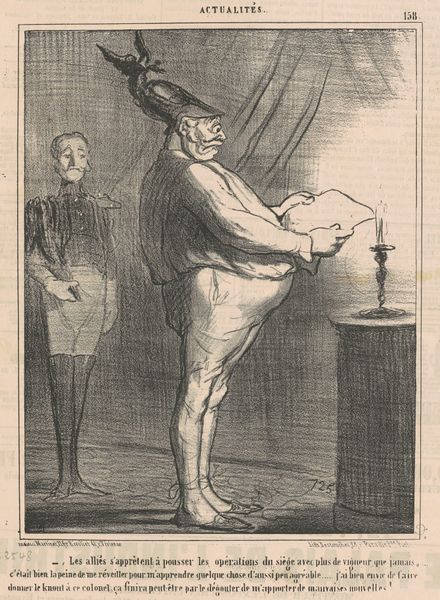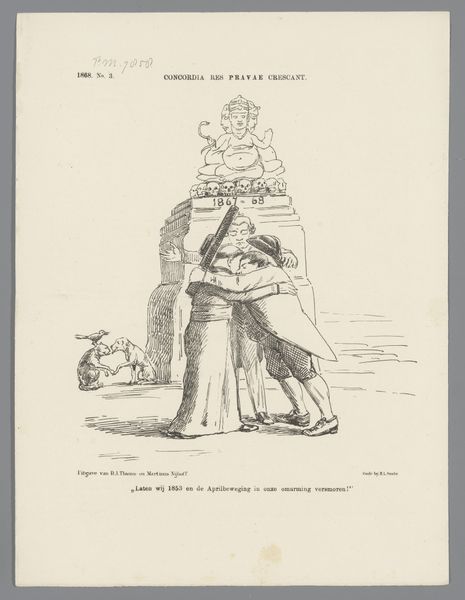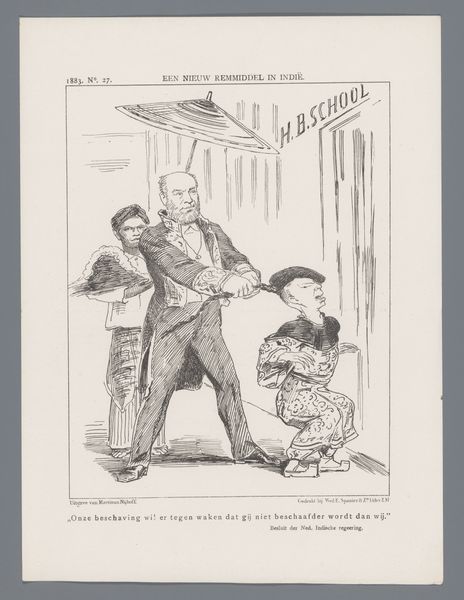
Onthulling van het standbeeld van wijlen Z.M. Willem II. 23 Maart 1854 1854
0:00
0:00
graphic-art, lithograph, print
#
graphic-art
#
lithograph
# print
#
caricature
#
figuration
#
line
#
history-painting
Dimensions: height 468 mm, width 570 mm
Copyright: Rijks Museum: Open Domain
Editor: This is "Onthulling van het standbeeld van wijlen Z.M. Willem II. 23 Maart 1854" – a lithograph print from 1854 by Johan Hendrik Hoffmeister. It definitely has a satirical edge to it, depicting figures that are clearly meant to be caricatures. How do you interpret the commentary it makes, especially regarding its historical context? Curator: What stands out to me is the means of production: the lithograph as a readily reproducible medium allowed for widespread dissemination of this critique. Consider the materials themselves - the ink, the paper. This isn't about some idealized notion of artistic genius, but about the labor and accessibility involved in circulating this visual message. We see the processes of power laid bare: one figure literally leashes the other. Editor: So you're saying it's less about the artistic skill and more about the social power dynamics at play through the act of making and distributing these images? Curator: Precisely. And who is consuming this? What segments of the Dutch population in 1854 are likely seeing and understanding this critique? That, to me, is where the meaning truly resides. The image, made via these accessible materials, engages in cultural dialogue. Notice, also, the integration of text. How does the added textual element affect the overall reading of the political climate? Editor: That makes a lot of sense. Looking at it that way, it's not just a funny drawing, but a piece of politically charged, reproducible material that had a very specific function in its time. The text makes the political message more direct and harder to misinterpret. Curator: Exactly. By thinking about production, dissemination, and consumption, the print offers fascinating insights into the socio-political realities of mid-19th-century Netherlands. What have you noticed from your material analysis? Editor: I guess, it's fascinating how this piece challenges the idea of art as purely aesthetic or symbolic, because the choices surrounding its creation—lithography, text, clear line drawing—reveal an intention for social intervention more than refined aesthetics. Thanks, that's a really useful way of approaching it!
Comments
No comments
Be the first to comment and join the conversation on the ultimate creative platform.
